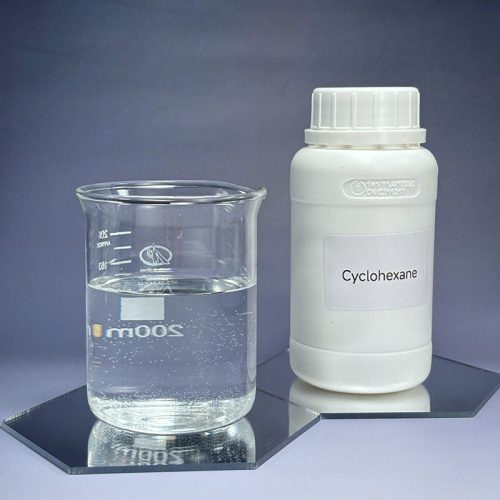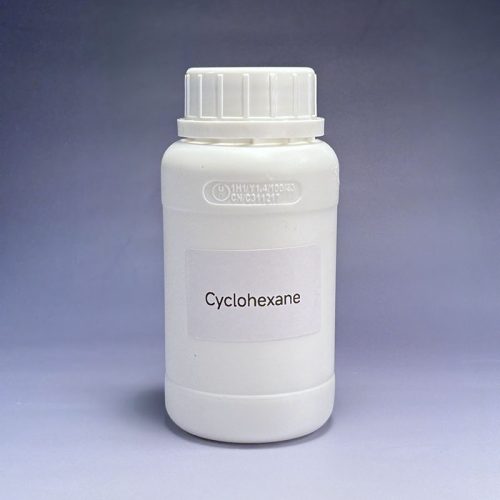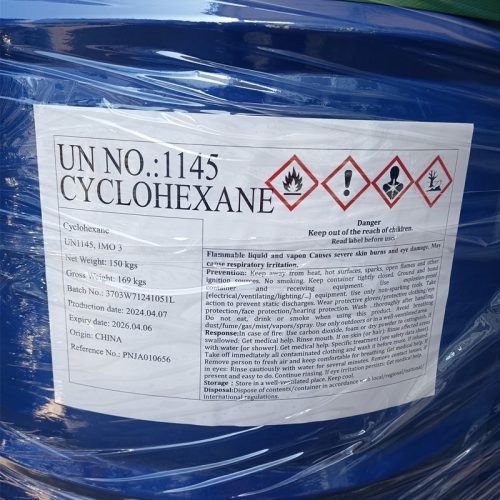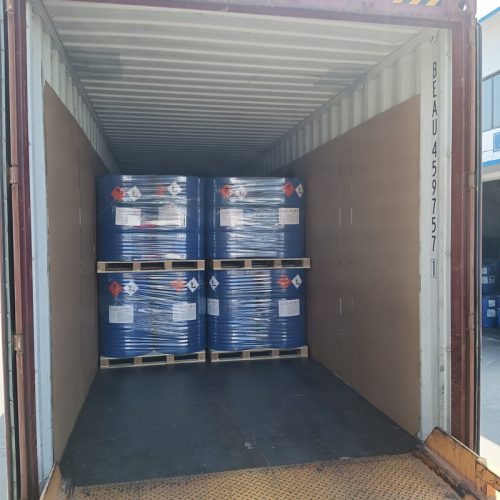

Cyclohexane
Cyclohexane is a colorless, flammable liquid with a detergent-like odor. Its chemical formula is C6H12. Cyclohexane has a melting point of 6.47°C and a boiling point of 80.74°C. It is insoluble in water but miscible with many organic solvents. It is used as a non-polar solvent and in the synthesis of adipic acid and caprolactam for nylon production.
- Molecular Formula: C₆H₁₂
- UN Number: 1145
- CAS Number: 110-82-7
- Hazardous Class: 3
- Grade: Industrial Grade
- HS Code: 2902110000
What is Cyclohexane?
Cyclohexane is a colorless, flammable liquid with a distinctive detergent-like odor, commonly used as a non-polar solvent in the chemical industry. Its molecular formula is C₆H₁₂, and it is a saturated hydrocarbon, specifically a cycloalkane. Cyclohexane is primarily utilized in the production of adipic acid and caprolactam, which are precursors to nylon 6,6 and nylon 6, respectively.
Additionally, it is used in various industrial applications such as the manufacture of varnishes, resins, and coatings, as well as in laboratory settings as a solvent and in organic synthesis. Its role in the petrochemical industry is also significant, where it is involved in the processing of crude oil and the production of other chemicals through hydrogenation and other reactions.
Technical Parameters
| Item | Specifications | Test Results | Unit |
| Assay | 99.9 min | 99.9 | % |
| Density, 20℃ | 0.777~0.782 | 0.78 | g/cm3 |
| Chromaticity(in Hazen) (Pt-Co) | 20 max | 10 | |
| Benzene | 100 max | 41 | mg/kg |
| Hexane: | 500 max | 9 | mg/kg |
| Methyl Cyclopentane | 800 max | 316 | mg/kg |
| Methyl Cyclohexane | 500 max | 54 | mg/kg |
| Distillation Range(At 101.3 KPa, including 80.7 ℃ ): | 2.0 max | / | |
| Sulfur | 5.0 max | 0.2 | mg/kg |
| Nonvolatile Matter | 10.0 max | 5 | mg/100ml |
Safety Is An Important Guarantee
Safety is our top priority.
To ensure your safety while using Cyclohexane, please be sure to download and carefully read the accompanying Material Safety Data Sheet (MSDS).
This document provides detailed safety guidelines, including how to handle potential hazards, accident response, and proper storage methods. It will help you understand and safely use Cyclohexane, ensuring personal safety and environmental protection.
Packing:150KG Iron Drum
A 150KG iron drum used for storing and transporting cyclohexane is specifically designed to handle the chemical’s characteristics.
Cyclohexane, being a flammable and volatile liquid, requires secure and durable containers. These iron drums are constructed from high-quality iron to ensure robustness and resistance to damage.
The drums feature secure sealing mechanisms, such as tight-fitting lids or bung closures, to prevent leaks and evaporation, thereby maintaining the safety and integrity of the cyclohexane during storage and transportation.
Support customize the packaging materials

Standard Loading Details

150KG Iron Drum With Pallet
- Small Container: 12 Drums
- Large Container: 24 Drum
150KG Iron Drum Without Pallet
- Small Container: 12 Drums
- Large Container: 24 Drums
FAQ
1.What are the physical and chemical properties of Cyclohexane?
Cyclohexane has several important physical and chemical properties:
- Molecular Formula: C₆H₁₂
- Appearance: Colorless, volatile liquid with a mild, sweet odor.
- Boiling Point: Approximately 80.7°C (177.3°F)
- Density: Around 0.78 g/cm³ at 20°C
- Solubility: Insoluble in water but miscible with most organic solvents.
- Chemical Stability: Stable under normal conditions but can react with strong oxidizing agents.
2.What are the health and environmental considerations associated with Cyclohexane?
Awareness of health and environmental impacts is essential when using Cyclohexane:
- Health: Cyclohexane can cause dizziness, headache, and nausea if inhaled. Prolonged or repeated exposure may affect the central nervous system. Avoid inhalation and direct contact with skin or eyes.
- Environment: Cyclohexane is volatile and can contribute to air pollution. It is also harmful to aquatic life. Proper handling, storage, and disposal measures should be followed to minimize environmental impact.
3.What emergency measures should be taken in case of a Cyclohexane spill or exposure?
Prompt action is required in case of a spill or exposure:
- Spill Response: Evacuate the area and ventilate. Use non-sparking tools to clean up the spill. Absorb with inert material (e.g., sand, earth) and place in a chemical waste container for proper disposal.
- Exposure Response: If inhaled, move the person to fresh air and seek medical attention if symptoms persist. In case of skin contact, wash thoroughly with soap and water. If Cyclohexane gets into the eyes, rinse with plenty of water and seek medical attention.
